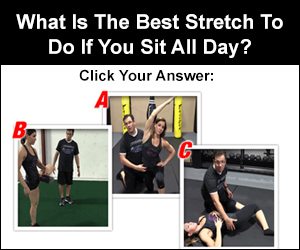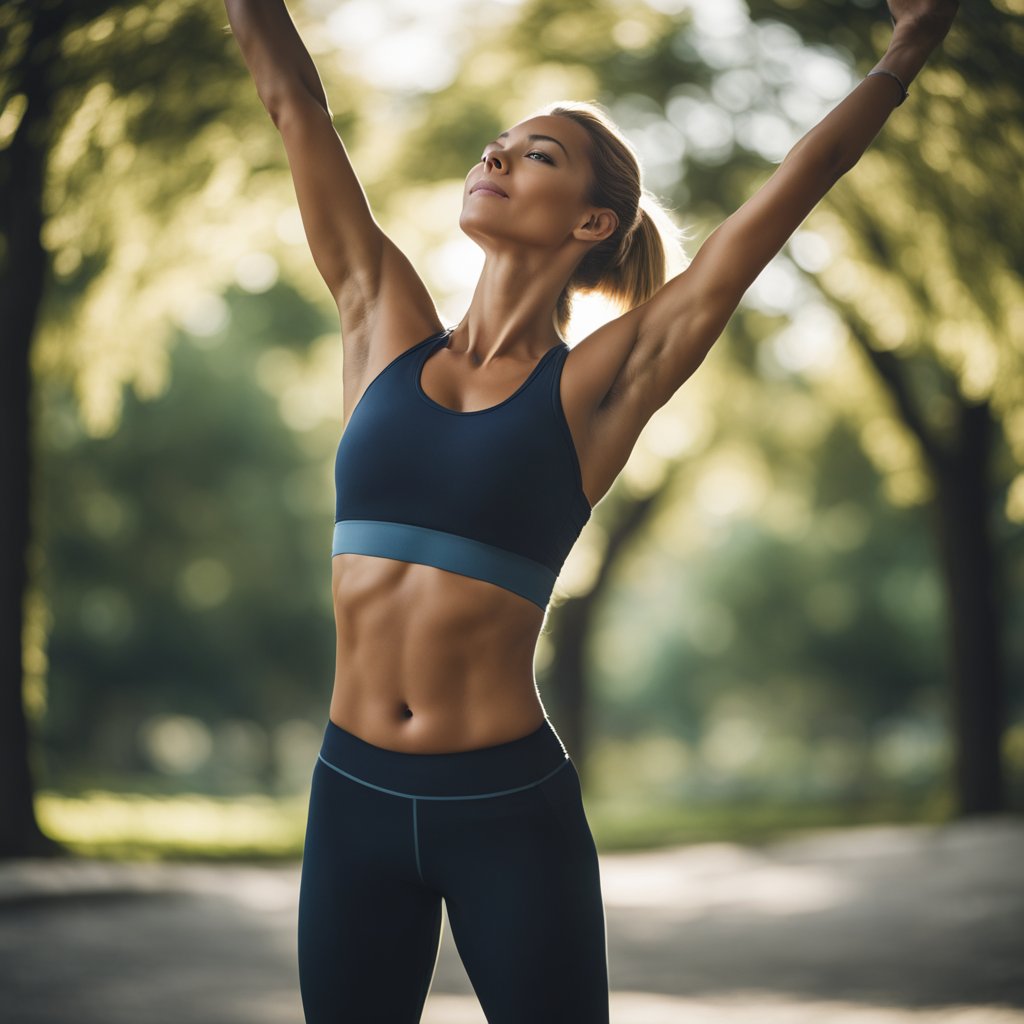Stretching is a fundamental component of physical fitness and overall well-being. It enhances flexibility, improves range of motion, and can help prevent injuries during exercise or daily activities. Regular stretching can lead to better posture, reduced muscle tension, and increased blood flow to muscles.

Many people underestimate the importance of stretching or are unsure how to incorporate it effectively into their routines. This guide aims to demystify stretching techniques and provide practical advice for beginners and fitness enthusiasts alike. From basic static stretches to more advanced dynamic methods, we’ll explore a variety of approaches suitable for different body parts and fitness goals.
Whether you’re an athlete looking to improve performance, an office worker seeking relief from desk-related stiffness, or someone aiming to enhance general flexibility, this guide will equip you with the knowledge to develop a tailored stretching routine. We’ll cover proper form, timing, and frequency to help you maximize the benefits of your stretching practice.
Key Takeaways
- Consistent stretching improves flexibility and may reduce injury risk
- Tailoring stretching routines to individual needs enhances effectiveness
- Proper technique and timing are crucial for optimal stretching benefits
Understanding Stretching and Its Importance
Stretching is a fundamental component of physical fitness that enhances flexibility, range of motion, and overall well-being. It plays a crucial role in promoting muscle health, preventing injuries, and supporting recovery.
Types of Stretching: Dynamic and Static
Dynamic stretching involves moving parts of the body and gradually increasing reach, speed of movement, or both. This type is ideal for warming up before physical activity. Examples include arm circles, leg swings, and torso twists.
Static stretching, on the other hand, involves holding a stretch for a prolonged period, typically 15-30 seconds. This technique is best used after exercise or for general flexibility improvement. Common static stretches include hamstring stretches, quadriceps stretches, and calf stretches.
Both types of stretching offer unique benefits. Dynamic stretches prepare the body for movement, while static stretches help cool down and improve overall flexibility.
Health Benefits of Regular Stretching
Regular stretching improves flexibility and range of motion, allowing for easier and fuller movement. It enhances physical performance by preparing muscles for activity and reducing the risk of injury.
Stretching promotes better posture by loosening tight muscles that may pull parts of the body out of alignment. It also increases blood flow to muscles, which can help reduce muscle soreness and speed up recovery after intense physical activity.
Additionally, stretching can be an effective stress-relief technique. The focus required and the physical act of stretching can help relax both the body and mind.
The Role of Stretching in Injury Prevention and Recovery
Stretching plays a vital role in injury prevention by improving flexibility and joint range of motion. This increased flexibility can help muscles and joints better handle physical stress, reducing the likelihood of strains, sprains, and other injuries.
In injury recovery, stretching is often a key component of rehabilitation programs. It helps maintain flexibility in injured areas, prevents the formation of scar tissue, and promotes healing by increasing blood flow to the affected muscles and joints.
Gradual and controlled stretching can also help restore normal movement patterns after an injury, aiding in the return to regular physical activity. However, it’s crucial to consult with a healthcare professional before starting any stretching routine during injury recovery.
Creating a Stretching Routine
A well-designed stretching routine enhances flexibility, reduces injury risk, and improves overall physical performance. Tailoring the routine to individual needs and fitness levels ensures optimal results.
Components of an Effective Stretching Session
Start with a 5-10 minute warm-up to increase blood flow and prepare muscles for stretching. Focus on major muscle groups, including legs, back, chest, and arms.
Incorporate dynamic stretches like leg swings and arm circles for 5-7 minutes. These movements improve range of motion and activate muscles.
Follow with static stretches, holding each position for 15-30 seconds. Perform 2-3 repetitions per stretch, targeting all major muscle groups.
End the session with a 5-minute cool-down of gentle movements to gradually lower heart rate and prevent dizziness.
Stretching for Different Fitness Levels and Goals
Beginners should start with basic stretches, focusing on proper form and breathing. Aim for 10-15 minutes of daily stretching to build consistency.
Intermediate exercisers can increase stretch duration to 30-45 seconds and add more challenging poses. Incorporate stretching into workout routines 3-4 times per week.
Advanced individuals may benefit from longer holding times (45-60 seconds) and more complex stretches. Daily stretching sessions of 20-30 minutes can further enhance flexibility.
Athletes should tailor stretches to their specific sport, emphasizing muscles used most frequently. Pre-competition routines may focus on dynamic stretches, while post-event stretching aids in recovery.
Targeted Stretching Exercises by Body Region

Effective stretching targets specific muscle groups and joints to improve flexibility and reduce tension. Different areas of the body require unique stretching approaches to maximize benefits and prevent injury.
Upper Body: Shoulders, Neck, and Arms
Shoulder rolls help release tension in the upper back and neck. Perform 10-15 rotations forward, then backward. Neck tilts gently stretch the sides of the neck. Hold each tilt for 15-30 seconds.
For arms, extend one arm across the chest, holding it with the opposite hand. This stretches the shoulder and upper arm muscles. Hold for 30 seconds on each side.
Tricep stretches involve reaching one arm overhead, bending at the elbow. Use the opposite hand to gently pull the elbow behind the head. Hold for 20-30 seconds per arm.
Core and Back: Chest, Abdominals, and Lower Back
The cat-cow stretch targets the spine and abdominal muscles. Start on hands and knees, alternating between arching and rounding the back. Perform 10-15 repetitions.
For the chest, stand in a doorway with arms outstretched. Lean forward to feel a stretch across the chest muscles. Hold for 20-30 seconds.
The seated forward bend stretches the lower back and hamstrings. Sit with legs extended, reach for the toes. Hold for 30 seconds, focusing on lengthening the spine.
Lower Body: Hips, Legs, and Hamstrings
Lunges effectively stretch hip flexors and quadriceps. Step one foot forward, lowering the back knee toward the ground. Keep the front knee aligned with the ankle. Hold for 30 seconds per side.
For hamstrings, sit on the floor with one leg extended. Reach for the toes of the extended leg, keeping the knee straight. Hold for 30 seconds, then switch legs.
Calf stretches can be done against a wall. Place hands on the wall, step one foot back, pressing the heel into the floor. Lean forward, keeping the back leg straight. Hold for 30 seconds per leg.
Stretching Techniques for Specific Activities and Populations
Different activities and life stages require tailored stretching approaches. Proper techniques can enhance performance, aid recovery, and support overall well-being across various groups.
Sports-Specific Stretching for Athletes
Athletes benefit from customized stretching routines that target sport-specific muscle groups. Dynamic stretches are crucial for pre-competition warm-ups, improving joint range of motion and preparing muscles for intense activity.
For runners, focus on hamstring and calf stretches. Cyclists should prioritize quadriceps and hip flexor stretches. Swimmers can benefit from shoulder and upper back stretches to enhance stroke efficiency.
Static stretches are best reserved for post-exercise cool-downs. Hold each stretch for 15-30 seconds to improve flexibility and reduce muscle tension. Incorporate partner-assisted stretches for deeper muscle engagement.
Stretching Considerations for Aging Individuals
As we age, maintaining flexibility becomes increasingly important. Gentle, low-impact stretches can help preserve mobility and reduce the risk of injury.
Chair-based stretches are ideal for those with limited mobility. Focus on neck, shoulder, and ankle rotations to keep joints supple. Yoga-inspired stretches, such as seated forward bends, can improve spine flexibility.
Always warm up before stretching. A short walk or light arm circles can increase blood flow. Progress slowly, avoiding sudden movements. Listen to your body and stop if you experience pain.
Stretching in Recovery and Physical Therapy Contexts
Stretching plays a vital role in injury recovery and rehabilitation. Physical therapists often incorporate specific stretching techniques to restore function and prevent re-injury.
Passive stretching, where a therapist gently moves the patient’s limb, can be effective for improving joint range of motion. PNF (proprioceptive neuromuscular facilitation) techniques combine stretching and contraction to enhance flexibility.
For those recovering from muscle strains, gentle active stretches can promote healing. Start with small movements and gradually increase range. Always follow a physical therapist’s guidance to ensure safe and effective rehabilitation.
Advanced Stretching and Flexibility Techniques

Advanced stretching techniques can significantly enhance flexibility and performance. These methods incorporate specialized equipment and leverage neuromuscular responses to achieve greater range of motion.
Incorporating Equipment and Tools: Foam Rollers and Straps
Foam rollers are cylindrical tools used for self-myofascial release. Rolling target areas helps release muscle tension and improves flexibility. The American Council on Exercise recommends foam rolling before static stretching for optimal results.
Stretching straps aid in achieving deeper stretches, especially for hard-to-reach areas. They allow users to perform active and passive stretches with greater control and intensity.
“Thread the needle” is an advanced stretch using a strap. It targets the shoulders and upper back, promoting thoracic mobility.
Exploring Proprioceptive Neuromuscular Facilitation (PNF)
PNF is a sophisticated stretching technique that combines passive stretching with isometric contractions. This method enhances flexibility by taking advantage of the body’s proprioceptors.
The American College of Sports Medicine notes that PNF can increase range of motion more effectively than static stretching alone. Common PNF techniques include hold-relax and contract-relax methods.
PNF stretches typically involve a partner or trainer. They apply resistance while the athlete contracts and relaxes specific muscle groups. This process helps override the stretch reflex, allowing for deeper stretches.

